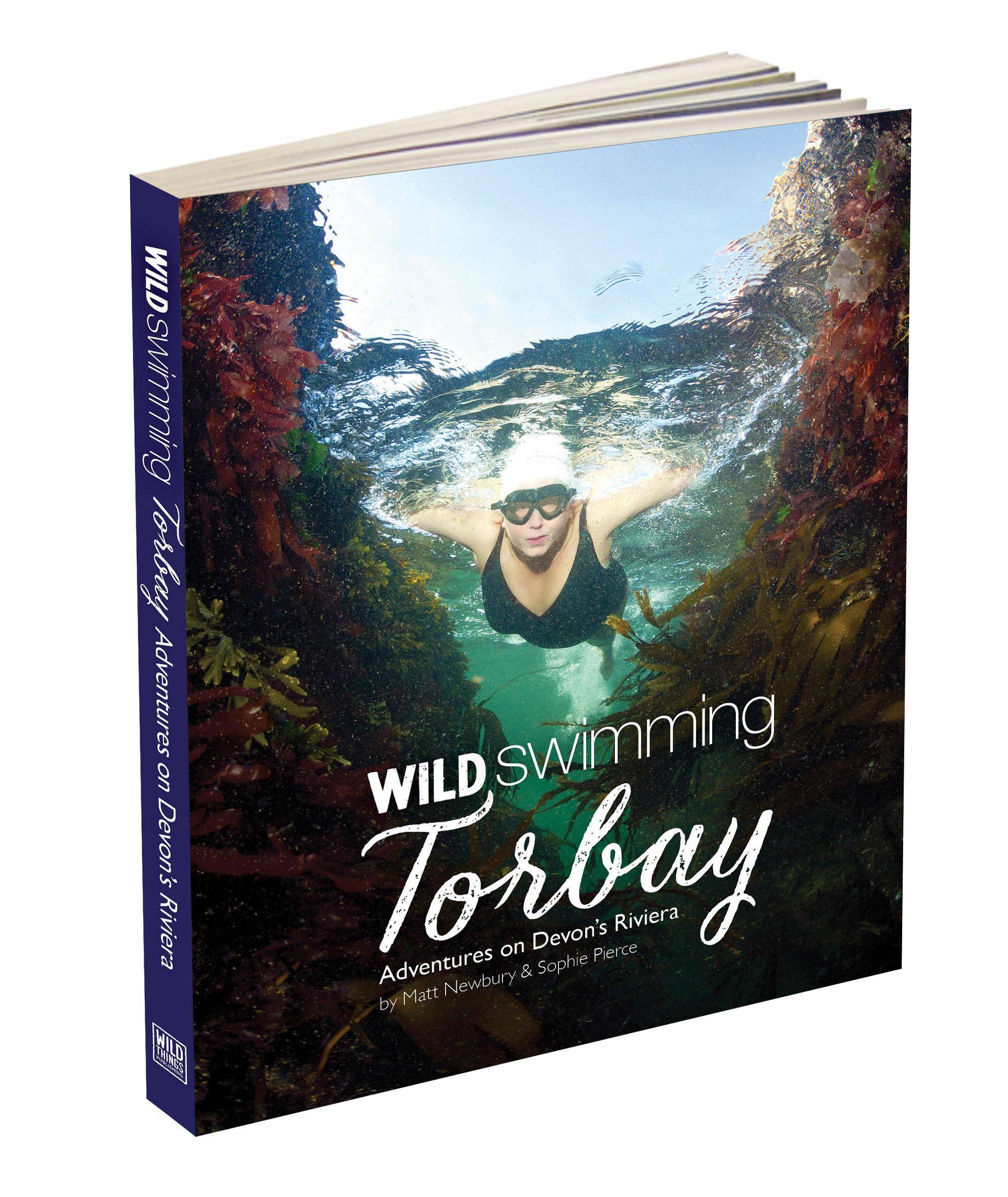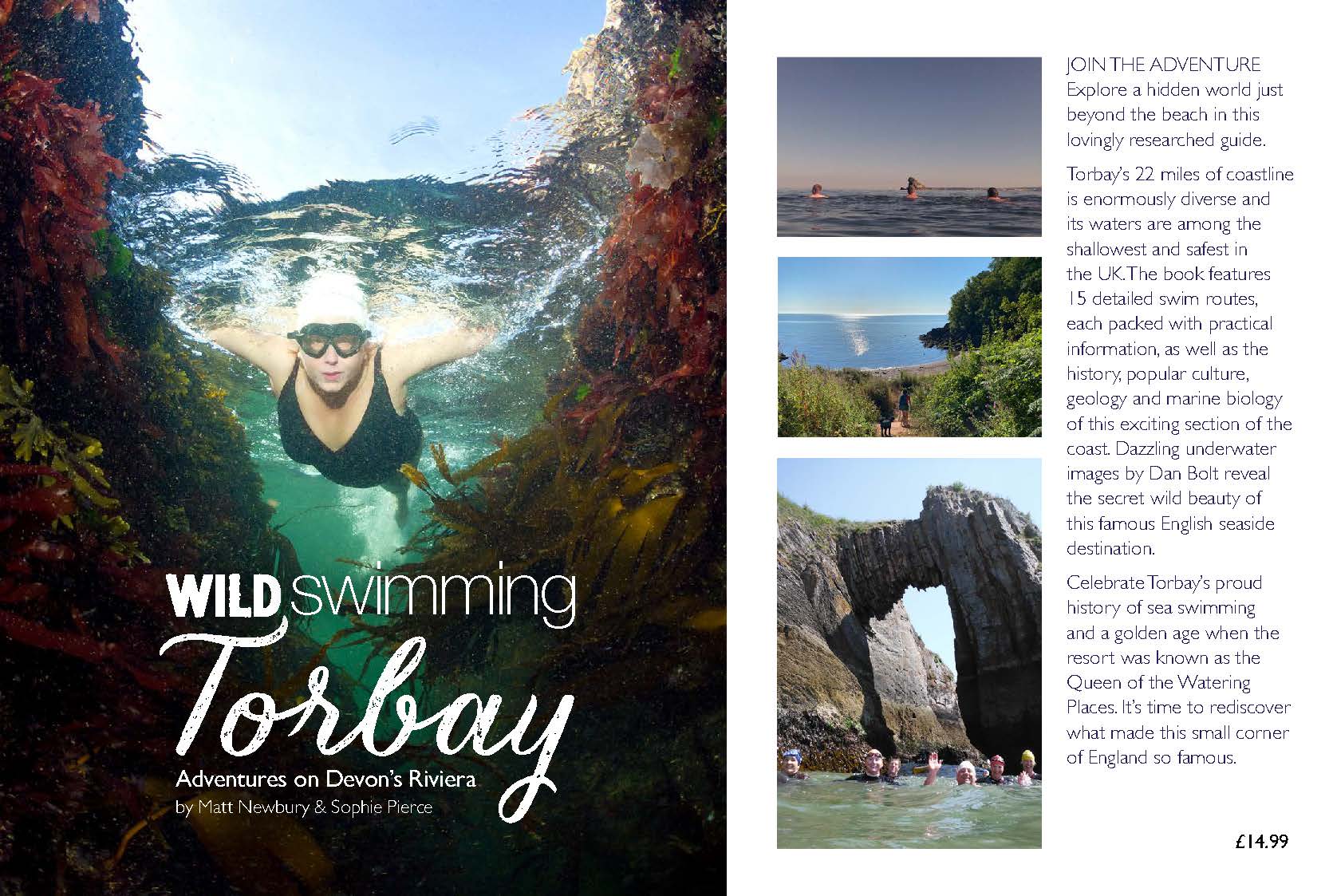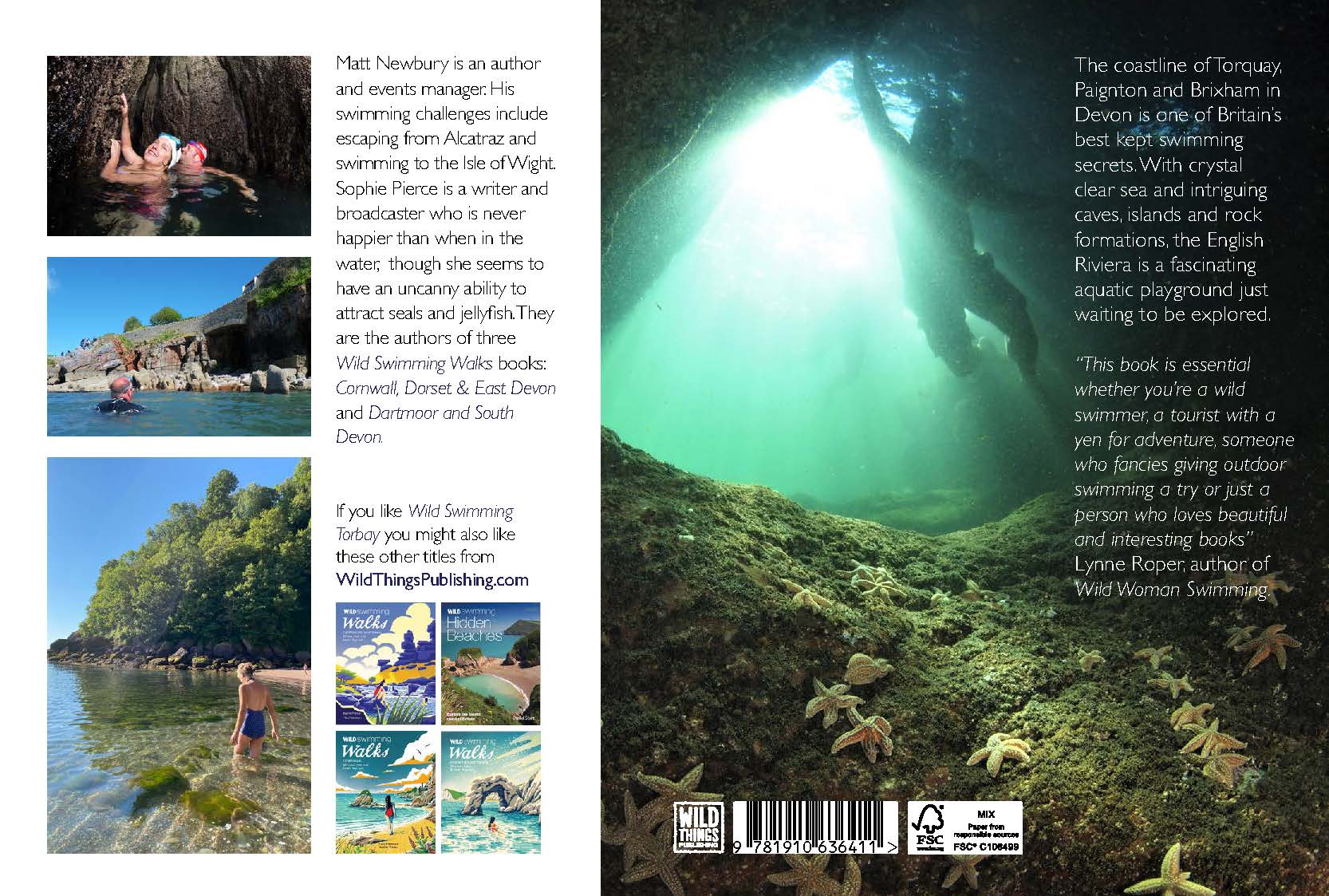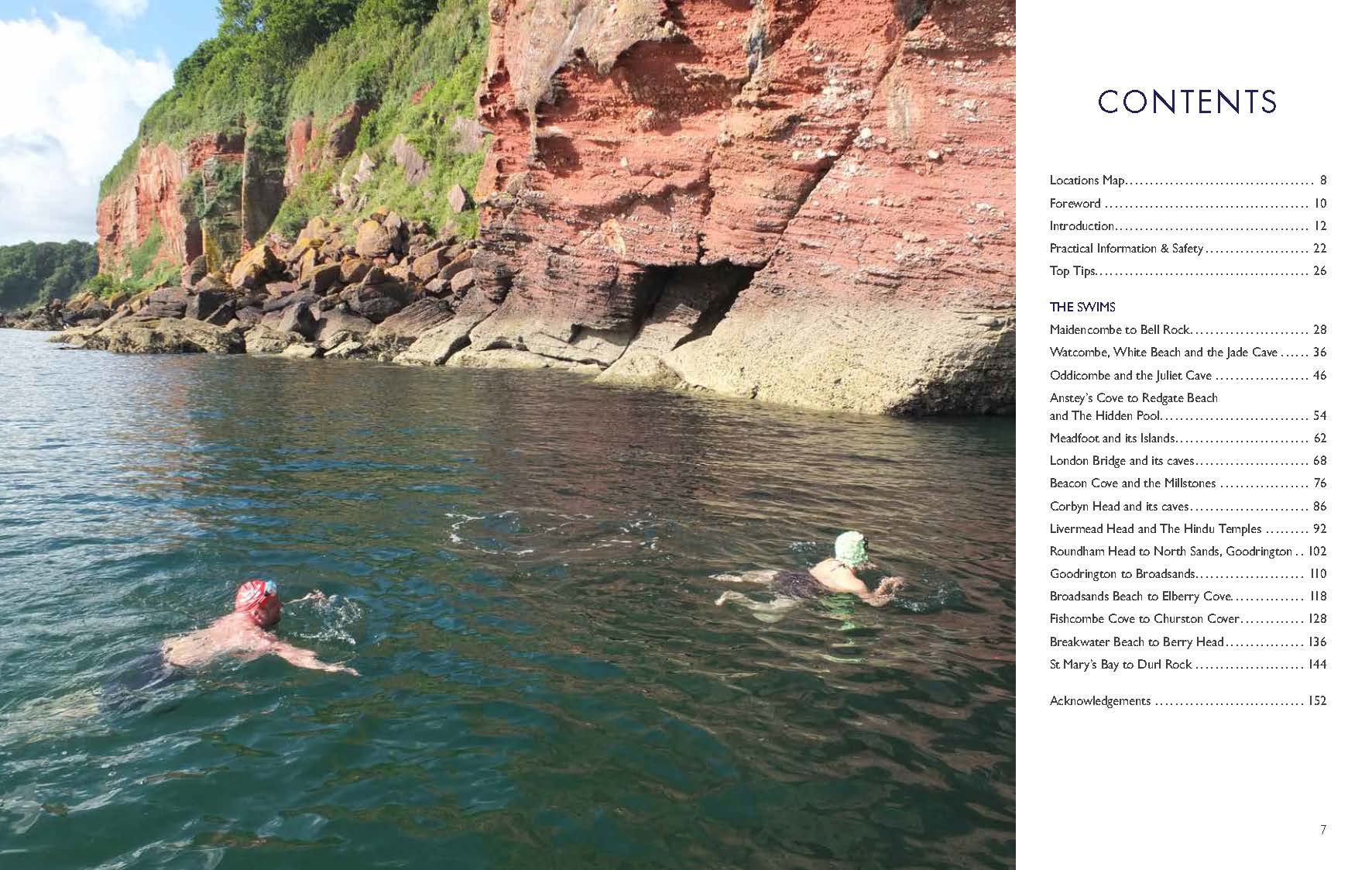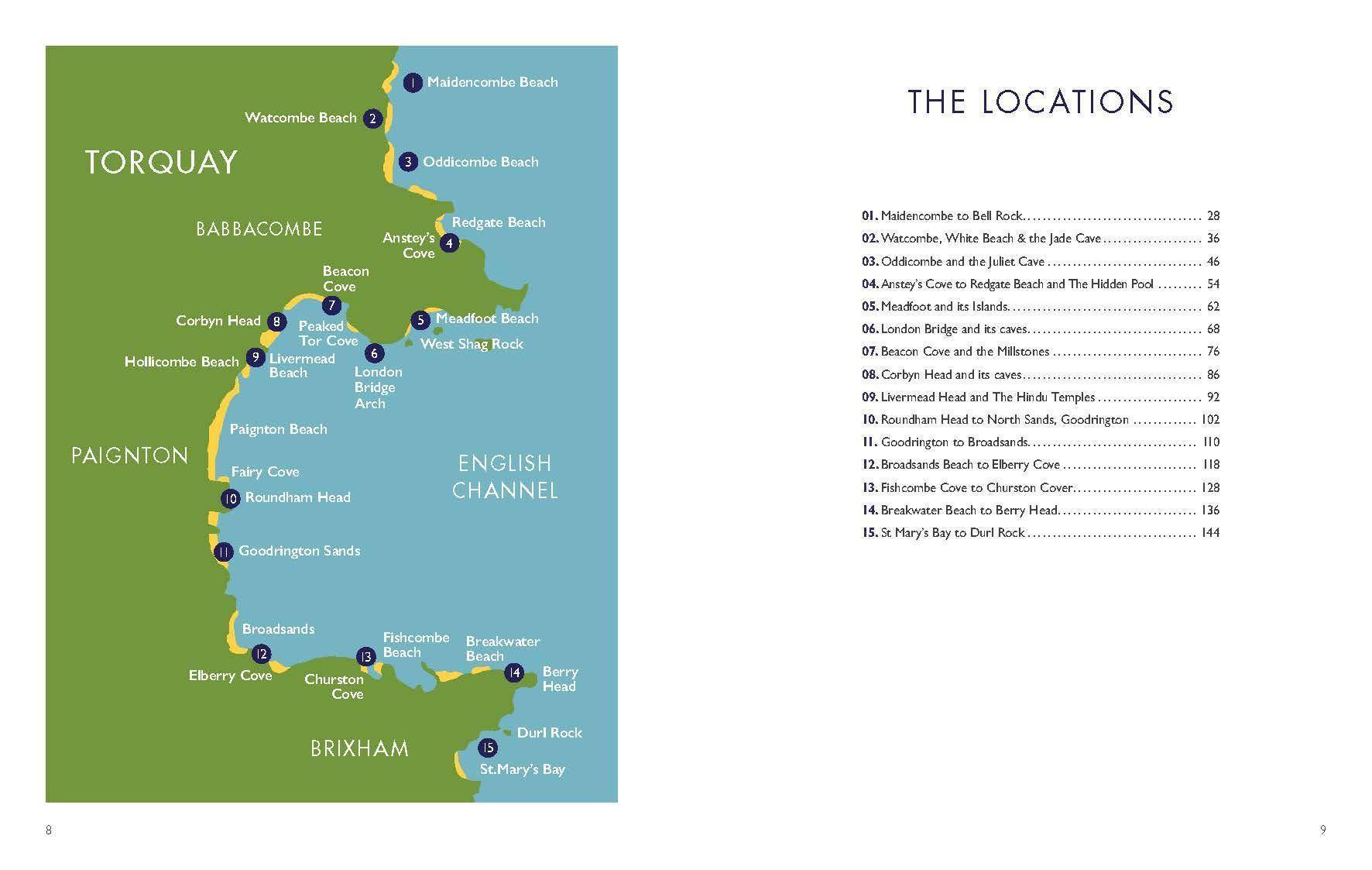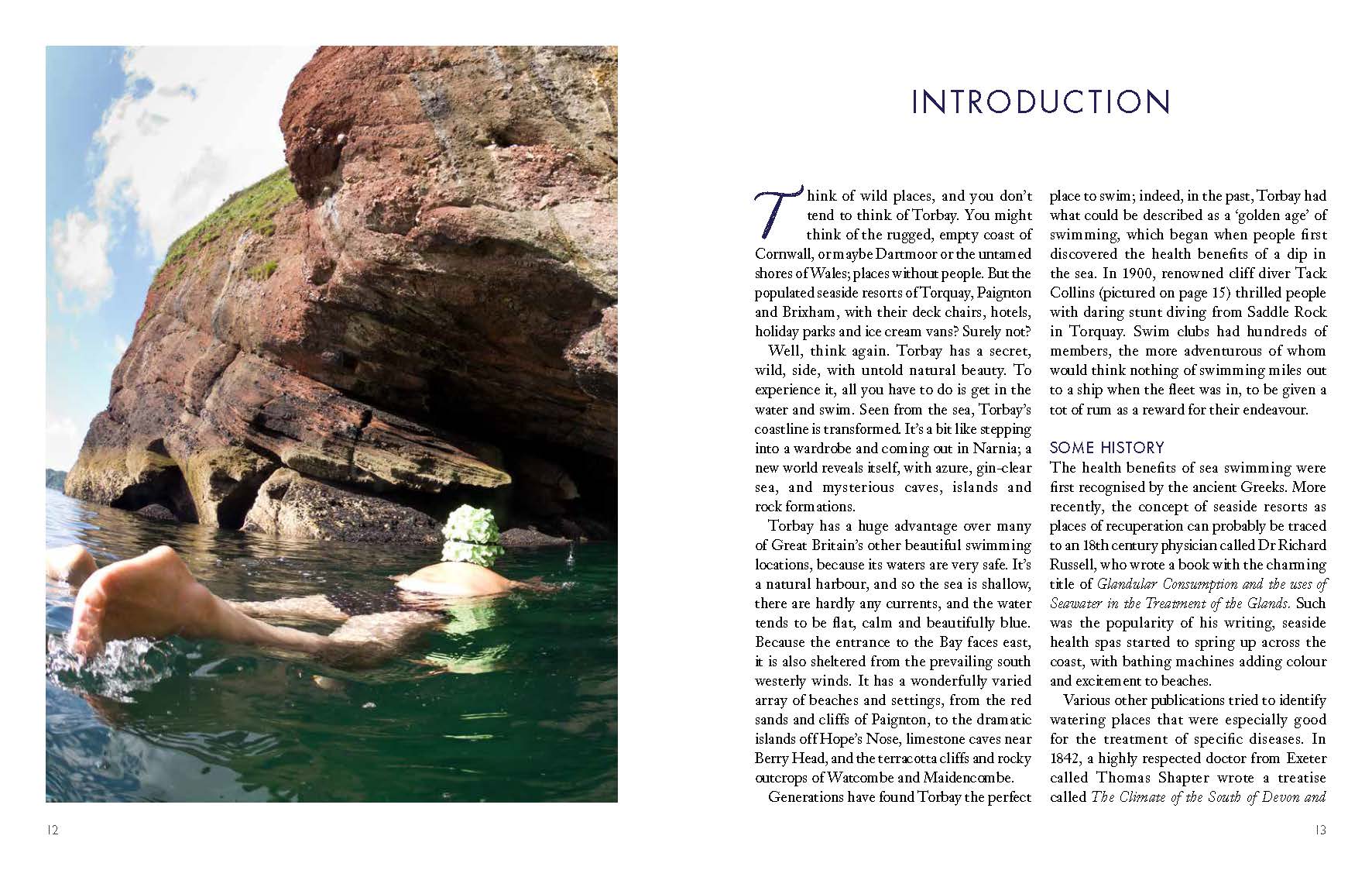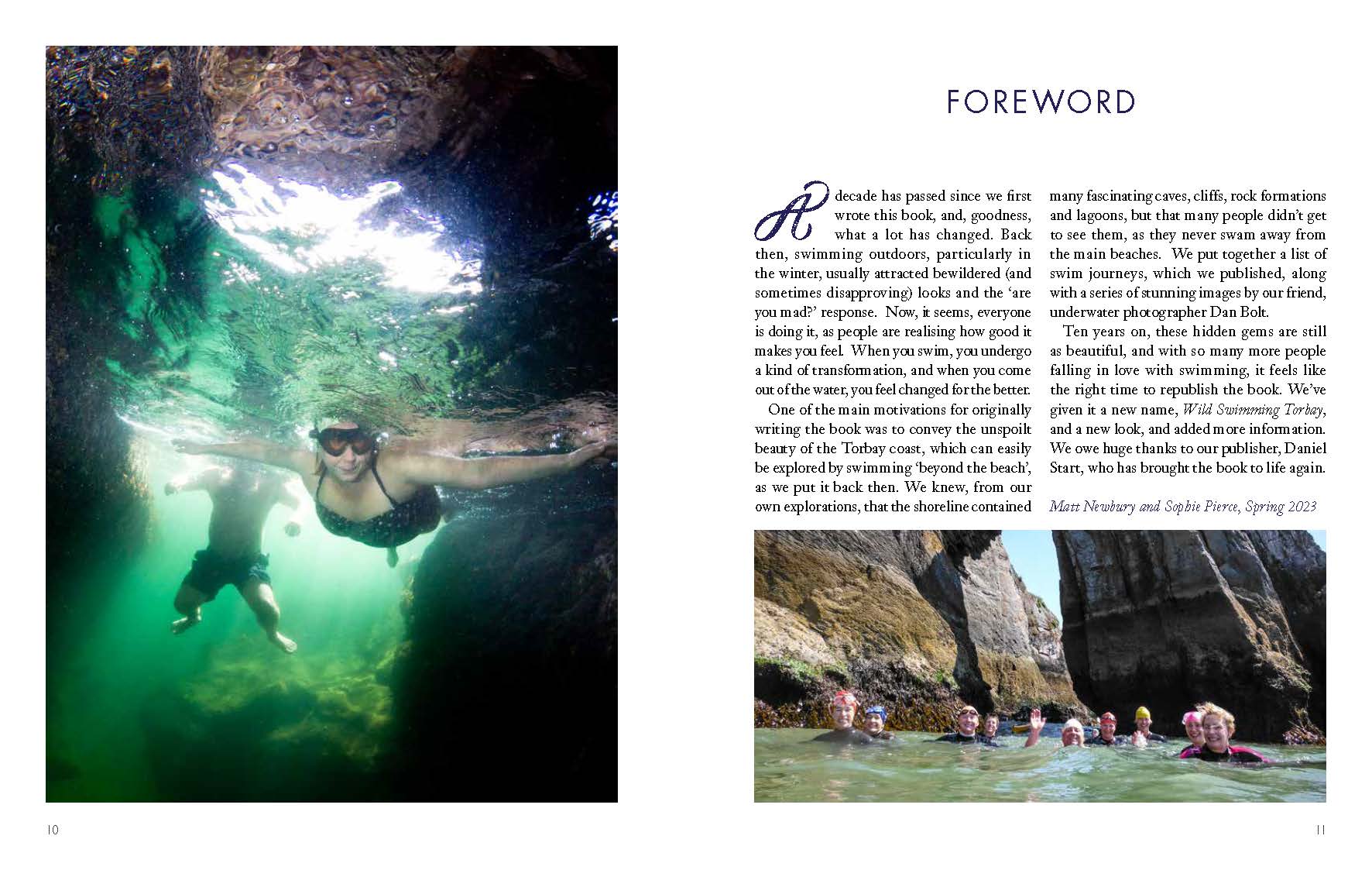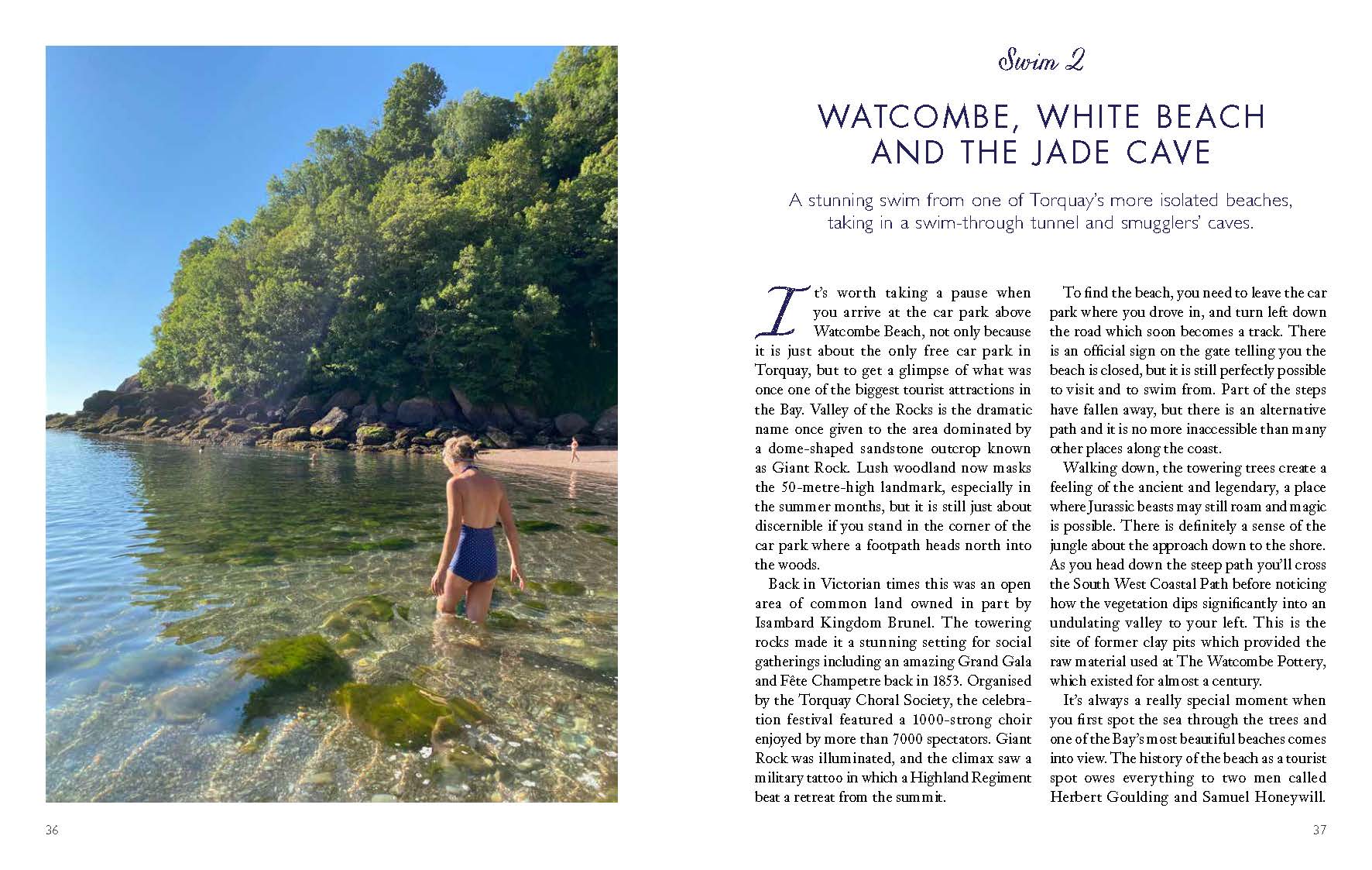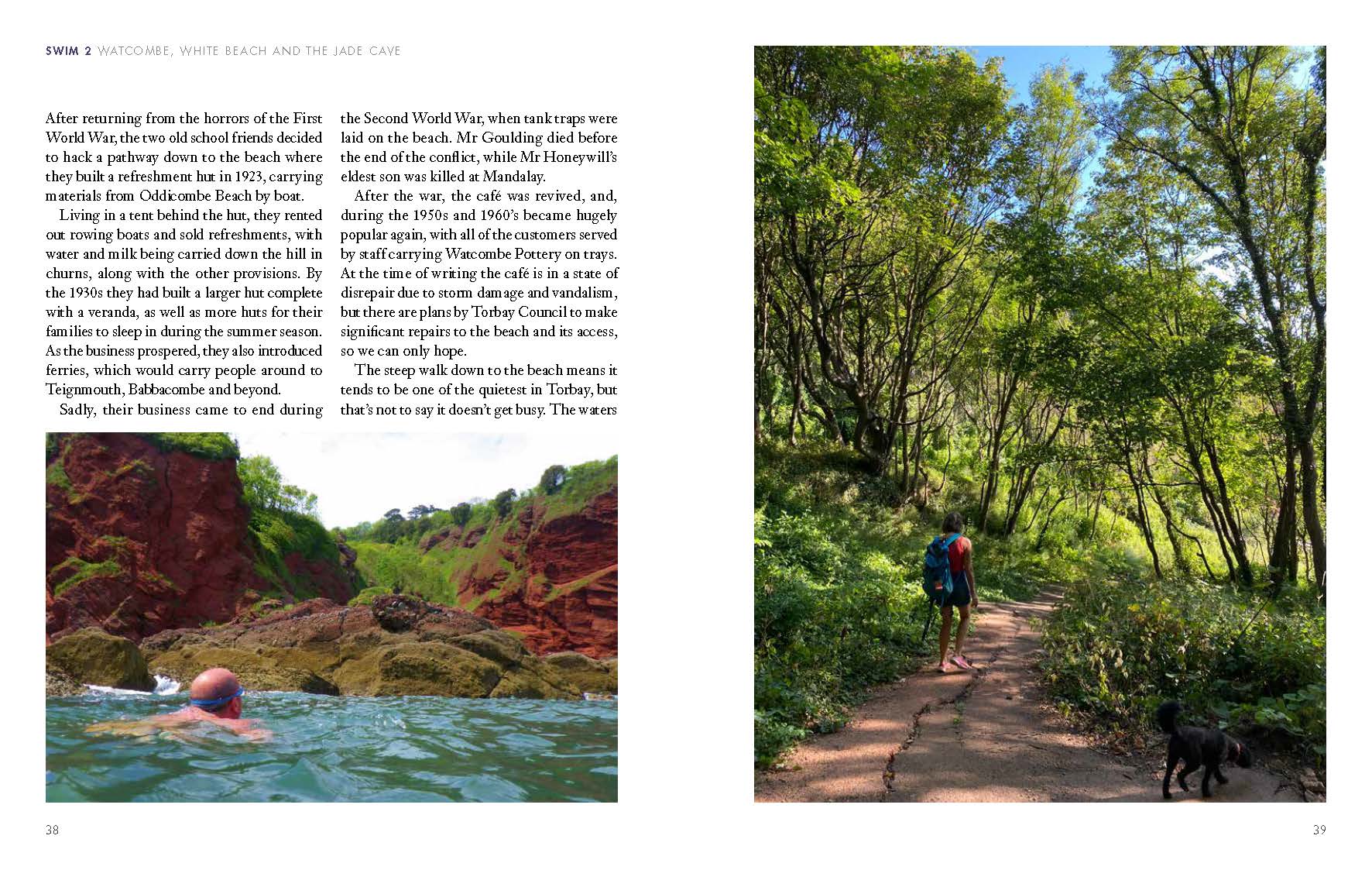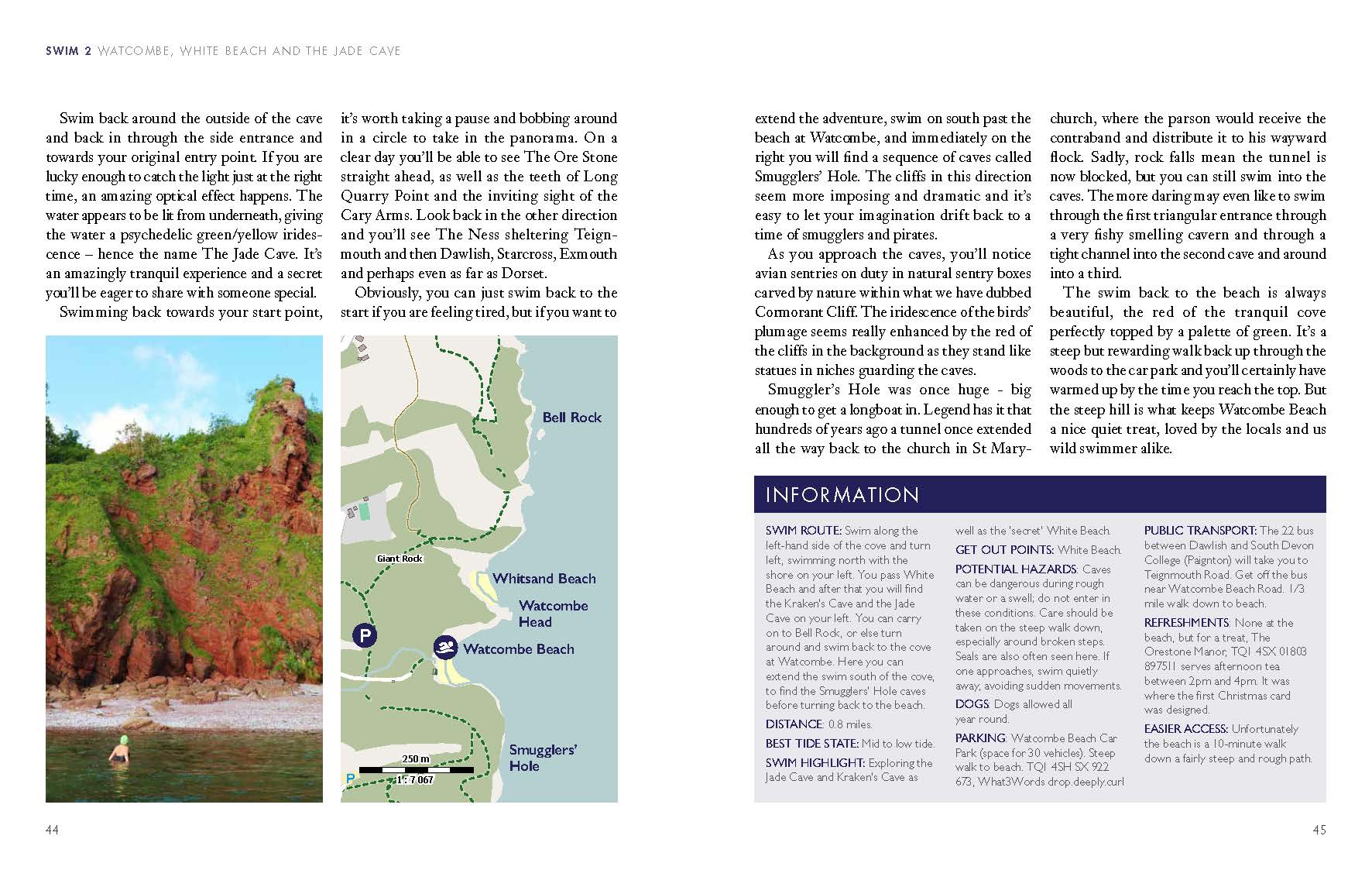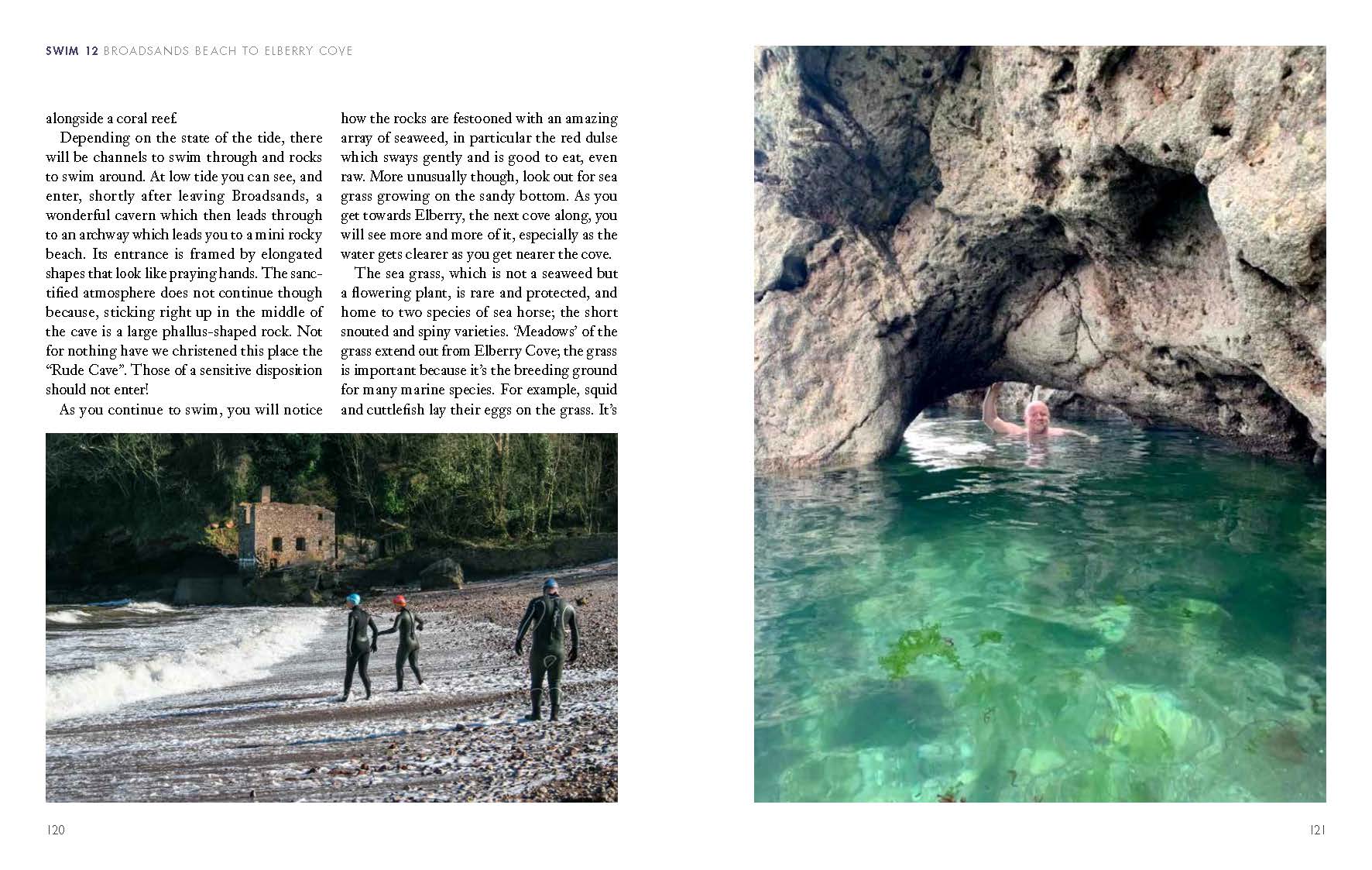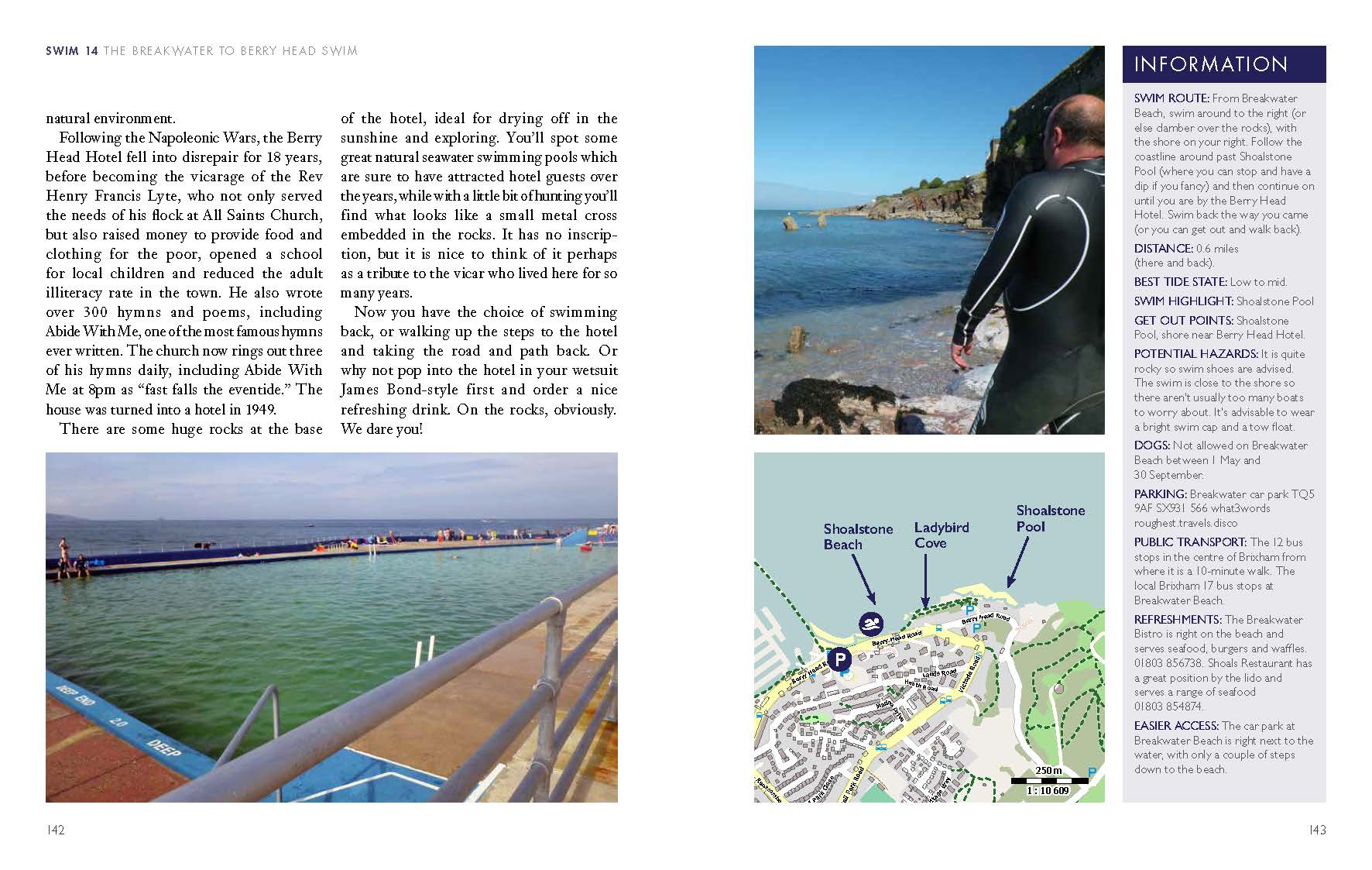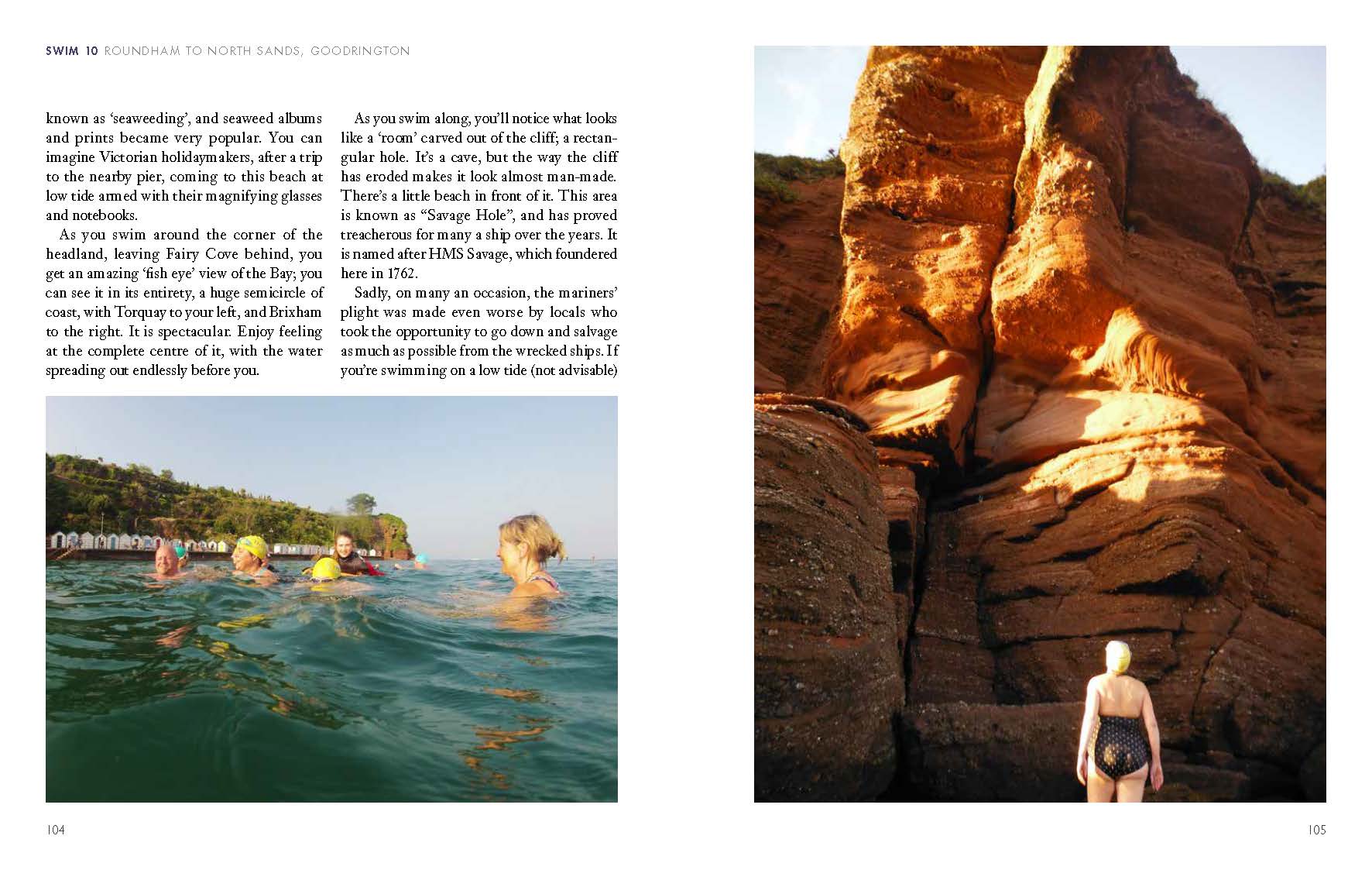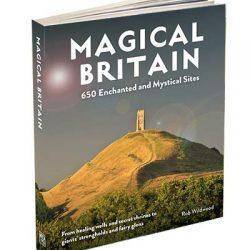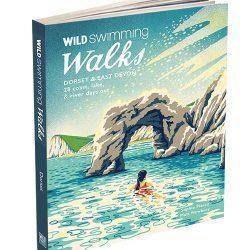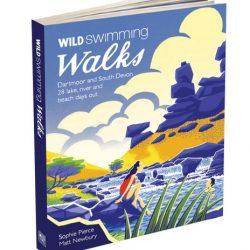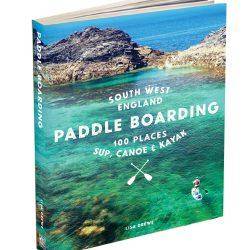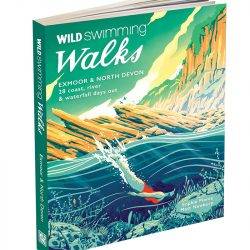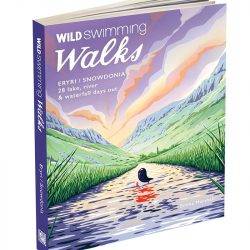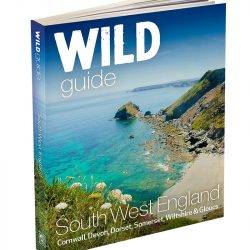The coastline of Torquay, Paignton and Brixham in Devon is one of Britain’s best kept swimming secrets. With crystal clear sea and intriguing caves, islands and rock formations, the English Riviera is a fascinating aquatic playground just waiting to be explored.
“This book is essential whether you’re a wild swimmer, a tourist with a yen for adventure, someone who fancies giving outdoor swimming a try or just a person who loves beautiful and interesting books” Lynne Roper, author of Wild Woman Swimming.
Join the adventure: Explore a hidden world just beyond the beach in this lovingly researched guide.
Torbay’s 22 miles of coastline is enormously diverse and its waters are among the shallowest and safest in the UK. The book features 15 detailed swim routes, each packed with practical information, as well as the history, popular culture, geology and marine biology of this exciting section of the coast. Dazzling underwater images by Dan Bolt reveal the secret wild beauty of this famous English seaside destination.
Celebrate Torbay’s proud history of sea swimming and a golden age when the resort was known as the Queen of the Watering Places. It’s time to rediscover what made this small corner of England so famous.
About the authors
Matt Newbury is an author and events manager. His swimming challenges include escaping from Alcatraz and swimming to the Isle of Wight. Sophie Pierce is a writer and broadcaster who is never happier than when in the water, though she seems to have an uncanny ability to attract seals and jellyfish. They are the authors of three Wild Swimming Walks books: Cornwall, Dorset & East Devon and Dartmoor and South Devon.
Swim Routes
Maidencombe to Bell Rock 28
Watcombe, White Beach & the Jade Cave 36
Oddicombe and the Juliet Cave 46
Anstey’s Cove to Redgate Beach and The Hidden Pool 54
Meadfoot and its Islands 62
London Bridge and its caves 68
Beacon Cove and the Millstones 76
Corbyn Head and its caves 86
Livermead Head and The Hindu Temples 92
Roundham Head to North Sands, Goodrington 102
Goodrington to Broadsands 110
Broadsands Beach to Elberry Cove 118
Fishcombe Cove to Churston Cover 128
Breakwater Beach to Berry Head 136
St Mary’s Bay to Durl Rock 144
Introduction
Think of wild places, and you don’t tend to think of Torbay. You might think of the rugged, empty coast of Cornwall, or maybe Dartmoor or the untamed shores of Wales; places without people. But the populated seaside resorts of Torquay, Paignton and Brixham, with their deck chairs, hotels, holiday parks and ice cream vans? Surely not?
Well, think again. Torbay has a secret, wild, side, with untold natural beauty. To experience it, all you have to do is get in the water and swim. Seen from the sea, Torbay’s coastline is transformed. It’s a bit like stepping into a wardrobe and coming out in Narnia; a new world reveals itself, with azure, gin-clear sea, and mysterious caves, islands and
rock formations.
Torbay has a huge advantage over many of Great Britain’s other beautiful swimming locations, because its waters are very safe. It’s a natural harbour, and so the sea is shallow, there are hardly any currents, and the water tends to be flat, calm and beautifully blue. Because the entrance to the Bay faces east, it is also sheltered from the prevailing south westerly winds. It has a wonderfully varied array of beaches and settings, from the red sands and cliffs of Paignton, to the dramatic islands off Hope’s Nose, limestone caves near Berry Head, and the terracotta cliffs and rocky outcrops of Watcombe and Maidencombe.
Generations have found Torbay the perfect place to swim; indeed, in the past, Torbay had what could be described as a ‘golden age’ of swimming, which began when people first discovered the health benefits of a dip in the sea. In 1900, renowned cliff diver Tack Collins (pictured on page 15) thrilled people with daring stunt diving from Saddle Rock in Torquay. Swim clubs had hundreds of members, the more adventurous of whom would think nothing of swimming miles out to a ship when the fleet was in, to be given a tot of rum as a reward for their endeavour.
SOME HISTORY
The health benefits of sea swimming were first recognised by the ancient Greeks. More recently, the concept of seaside resorts as places of recuperation can probably be traced to an 18th century physician called Dr Richard Russell, who wrote a book with the charming title of Glandular Consumption and the uses of Seawater in the Treatment of the Glands. Such was the popularity of his writing, seaside health spas started to spring up across the coast, with bathing machines adding colour and excitement to beaches.
Various other publications tried to identify watering places that were especially good for the treatment of specific diseases. In 1842, a highly respected doctor from Exeter called Thomas Shapter wrote a treatise called The Climate of the South of Devon and its Influence upon Health. He recommended Sidmouth’s mild air to “consumptives” and those suffering from “overwrought intellect”, while Exmouth’s bracing winds were said to be perfect for those with “weakly children” and those with questionable morals. Torquay and Dawlish, the author claimed, were “suitable during the winter to persons labouring under chest complaints”. He even went so far as to claim that Teignmouth‘s agreeable climate was ideally suited for restoring the health and strength “of those who may have suffered from the climates of the East of West Indies.”
People started travelling down to Torquay, believing the climate and sea air would assist their recovery from various illnesses. On Beacon Cove, what is now the Regina Hotel was the home of the original Torquay Medical Baths, where those not well enough to brave the sea could visit premises opened by a Mr Pollard to endure hot, tepid, vapour, shower and cold seawater baths. The poet Elizabeth Barrett was a patient there in 1840. However, having so many sick people in one place tended to cause the various illnesses to spread further. That same year, Dr A B Granville wrote about the new wellness industry, saying:
“The Frying Pan along the Strand is filled with respirator-bearing people who look like muzzled ghosts, and ugly enough to frighten the younger people to death”. Torquay was “the south west asylum for diseased lungs”, with the hotels “filled with spitting pots and echoing to the sounds of cavernous coughs; outside the only sound to be heard was the frequent tolling of the funeral bell.”
Towards the end of the 19th century, efforts were made to reverse this trend, and try and attract tourists, rather than invalids. 1902 saw the first advertising campaign to market Torquay to summer tourists and the resort was branded ‘Queen of the Watering Places’. The rapidly expanding resort adopted the motto ‘Salus et Felicitas’ or ‘health and happiness.’ It’s an appropriate slogan, which can still be spotted on buildings like Torquay Town Hall and The Pavilion.
As part of the new tourism boom, people started taking to the waters and a series of segregated beaches opened. The growth in the popularity of swimming coincided with a change in attitudes, and mixed bathing was finally allowed in 1900, thanks to the efforts of one Ernest Hutchings, who later became the Torquay Coroner. By this time beaches were packed with people swimming both competitively and for fun, and old postcards show people squashed like sardines on the beaches of Torquay, Paignton and Brixham.
Towards the end of the twentieth century, with the growth of cheap flights and package holidays, people seemed to fall out of love with swimming in British waters. Fortunately, the popularity of sea swimming once again seems to be on the rise. What, perhaps, some don’t realise, is quite how many exciting aquatic journeys you can experience in this beautiful part of Devon. And that’s what this book is all about. We want to take you on explorations by water; Torbay has so many amazing sights to see from the sea.
Take London Bridge for example (pictured on page 17). This is a stunning natural rock arch just a few hundred metres along the coast from the Imperial Hotel. It’s right in the centre of Torquay, but because of its position – only accessible from the water – many people don’t realise it’s there. But if you’re prepared to get in the water, it’s a short swim away.
One of the most appealing things about swimming in the sea is the feeling of going on an adventure along the coastline. There is so much to experience, from the natural flora and fauna, through the history of man’s activities on the coast, and the unusual geology which forms the shoreline itself.
GEOLOGICAL ADVENTURES
As swimmers, the rocks around us form the most evocative backdrop, creating atmospheres ranging from high drama through to mystery and intrigue. But how often do we stop to wonder what the rocks are telling us about the formation of the earth itself? And what life was like millions of years ago? The geology of Torbay is fascinating, telling a compelling story about life on earth so long ago that one can barely imagine it, and the best place to see it is from the sea.
Swimming along the shore you can see evidence of three main periods of geological history – the Devonian, Carboniferous and Permian. It all started just over four and half billion years ago when the earth wasn’t actually here; there were just hot gases and rocks spinning around in space, which eventually formed the earth. Over millions of
years cells evolved, and so started the beginnings of life.
The first period we really see in Torbay, the Devonian, was around 400 million years ago. Torbay was a shallow, tropical sea, with lots of marine wildlife. Devonian limestone can be seen mostly at the northern and southern ends of the Bay, at Torquay and Brixham, and it was formed from an ancient tropical reef built mostly of hard sponges but also early corals and a wealth of exotic life now extinct. Layer upon layer these creatures accumulated on the seabed and were later compressed over millions of years by younger sediments on top to form hard limestone.
The wealth of creatures were slowly fossilised as minerals carried by water crystallised to replace the hard parts of that once ancient life to form natural solid rock replicas. These fossilised remains are today visible in lots of places in Torbay, forming beautiful abstract patterns in the rocks.
In many places they still actually look like corals; you can spot these formations at Elberry Cove near Churston, and at both Oddicombe and Meadfoot in Torquay, to name just a few places.
After the Devonian period came the Carboniferous period, between 300 and 350 million years ago. It was a time of great instability, with the earth’s tectonic plates shifting around. Along the coast of Torbay, you can frequently see great folds in the rock, notably at the London Bridge arch, where immense pressure movement happened and these rocks were trapped deep under massive mountains that were formed. In some places the rocks were turned completely upside down.
After this, the land mass of which Torbay was part moved northwards, and landlocked, it became a dry desert, like the Sahara is today. This was the Permian period, which was between 300 and 250 million years ago. Torbay was between 15 and 30 degrees north of the equator and was incredibly hot. There were extreme storms which caused flash-floods in the mountains, sweeping stones and rocks down onto the plains below where the water rapidly sank into the parched and rocky ground.
At this time the Bay was covered by these desert rocks, some of them sand dunes and some of them rock debris, called Breccia, many of which are apparent in the red rocks around Paignton. Much later oxidation of the irons in the rocks turned them red and this is what gives the so-called Permian red rock of Torbay its distinctive colour.
Such is the significance of the geology of Torbay, it was declared a Geopark in 2007. As of 2022, the English Riviera UNESCO Global Geopark is one of 177 areas around the world to be endorsed by UNESCO, with the aim of using the geological heritage and linked environment, heritage and culture in these extraordinary places to help people understand and care for our remarkable shared planet. Geoparks also support sustainable economic development of the area, primarily through the development of geological tourism, including water-based activities like sea swimming.
FLORA AND FAUNA
Swimming in Torbay, you will see lots of wildlife. The waters here are particularly good for nature spotting, not just because of the variety of things to see, but because the geology itself has created a sheltered bay where the clarity and stillness of the water has great visibility. There are hundreds of varieties of seaweed, in a myriad of colours, as well as many different species of fish, crabs, corals, sponges and anemones. There are many sea birds, including cormorants, shags and oyster catchers, as well as guillemots and occasionally puffins. Large aquatic mammals like seals and dolphins are frequently seen.
Torbay’s rich and diverse marine wildlife was recognised in 2009 as part of a wider Special Area of Conservation for its reefs and amazing seacaves, whilst in 2013, the Government designated it a Marine Conservation Zone, citing the ‘high level of biodiversity in the area’. There are several different types of habitat in the Bay which support all manner of life. The soft sands are home to animals including heart urchins and brittle stars, while the rocky areas support sponges, sea squirts and seaweeds.
One of the most important and rarest habitats in the Bay is its seagrass beds. Seagrass is a flowering plant, the only one able to live in seawater and pollinate while submerged. It has long, bright green, ribbon-like leaves which are home to a wide range of animals including lobsters, seahorses and pipefish, as well as molluscs and worms. The beds also act as nursery areas to many species of fish. You can swim over sea grass beds in several places; they look like graceful green underwater meadows, and their presence is marked by special buoys to alert mariners so they don’t anchor and cause damage.
SOCIAL SWIMMING
In recent years, what’s become known as wild swimming has been enjoying a huge resurgence, fuelled by nostalgia, social networking, the proven health benefits and a thirst for some good old-fashioned fun and adventure. There are scores of Facebook groups, enabling people to meet up for everything from short dips to longer, endurance swims.
The health benefits of sea swimming include a boosted immune system, better circulation, hydrated skin, relaxed muscles and stress relief. Throw in weight loss (you’ll burn more calories the colder the water), an increased libido and a wonderful natural high, and, quite frankly, everyone should be doing it!
There’s also a growing awareness of the benefit of wild swimming for our mental health. A national group called Mental Health Swims (www.mentalhealthswims.co.uk) organises free meet ups, including one in Torbay. An organisation called HealthScape (www.healthscapecic.co.uk) also arranges regular swims around the Bay, aimed at boosting people’s mental and physical health.
Another change is that swimming is now an all-year round activity. Turn up on a dull winter’s day at high tide on any one of Torbay’s beaches, and you are likely to find lots of people having a dip. Ten years ago, when we first wrote this book, that would never have happened. It’s great that so many people are discovering what a joy outdoor swimming is, and how good it makes you feel.
The sea is free to use, making wild swimming just about the most inclusive activity there is. You need little or no equipment and indeed little of or no clothing – especially if you dare to bare at Petitor, Torbay’s only nudist beach. Sea swimming is also really good for those with injuries or with limited mobility, while the open water has a complete disregard for age. We frequently bump into octogenarians and nonagenarians taking to the water with sprightly gusto.
Add in dawn swims, moonlight swims, solstice swims, Christmas swims, fancy dress swims and there really is something for everyone. There’s even a group called 365 Swim Challenge (www.365seaswimchallenge.com), where people swim every day of the year, whilst raising funds for conservation and sea therapy.
Soon after writing the first edition of this book, we devised the Agatha Christie Sea Swim, a one-mile social swim that raises money for local charities. The swim was created as a celebration of the author’s early life in the Bay and her love of sea swimming. The swim still takes place every year as part of the Agatha Christie Festival each September (www.agathachristiefestival.com). We alternate the routes of what we call a ‘sightseeing swim’ between beaches enjoyed by the author, including Beacon Cove to Meadfoot Beach and Broadsands Beach to Goodrington. Do join us one year if you can.
We hope this book inspires even more people to rediscover the joys of sea swimming and to hunt out some of the incredible wild swims of Torbay. The swims we will share take in geology, marine biology, history, and popular culture. We want to take you on some aquatic journeys; to discover the fascinating past that has brought us to where we
are today, and to see the coastline from a fresh perspective.
This is our love letter to 22 very special miles of coastline and we do hope you enjoy it.
See you in the water!
